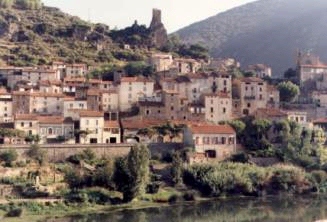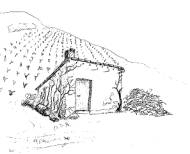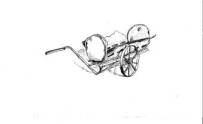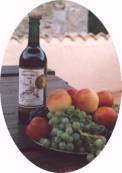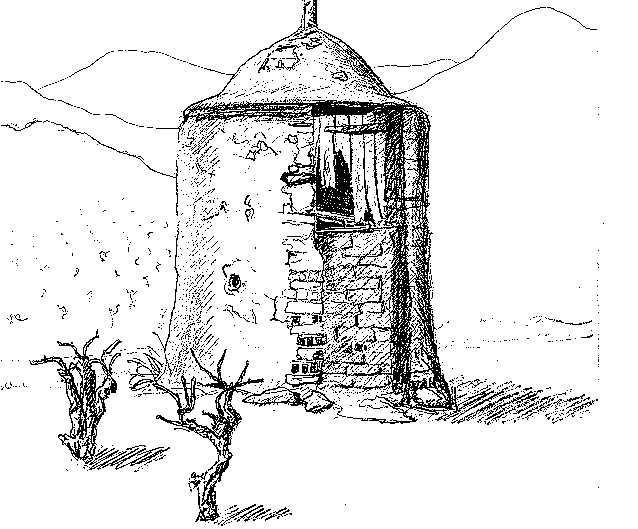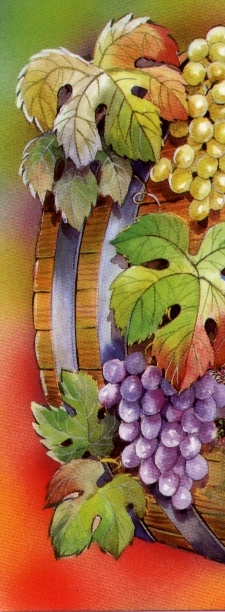Vines are sprayed with copper sulphate and dusted with sulphur and that continues into May. June is the time for the pruning of branches that may be a nuisance when passing between the vines during the next months. This has to be done carefully as the flowering season is well under way and the young grapes are forming. The vines do not like disturbance at this time. Treatment with copper sulphate and sulphur continues. July is a quiet moment for the vines when the formed fruit beings to swell, but some treatment is still necessary if there is rain. August is the start of the harvest of table grapes. These form a small part of the total grape harvest. Movement between the vines is kept to a minimum at this time so as not to damage the grapes, but at the end of the month the vignerons starts to control the maturity of the grapes and tests with a spectrograph the sugar content and hence the expected alcohol content of the grapes. September starts in a frenzy of preparation, getting equipment ready for the start of the harvest or vendanges. In the past the whole family came to help and large numbers of casual workers arrived in special trains from nearby Spain. The same workers arrived year after year and any absentee replaced by other family members as a matter of honour so that the vigneron was not short of help. Nowadays mechanisation in many areas has reduced the need to import labour, except for the more hilly areas such as Roquebrun, where the terrain is inaccessible to machines. The vendanges is a festive but tiring season, lasting from mid September to mid October, when groups of grape pickers can be seen moving between the vines. The day is hard, spent doubled up, and the danger of cutting fingers with secateurs in the search for grapes hidden deep within the foliage is high. Porteurs struggle with laden comportes, (large plastic containers that were once made of wood) to vehicles waiting to take the harvest to the cave where the grapes will be transformed into the liquid known to man for thousands of years, and which is only now being recognized as such a valuable aid to health. The grape pickers’ evening is spent in renewing old friendships from previous years. The final day of the vendanges for each vignerons is celebrated with a meal en famille before the break up of the team until next year. A short rest follows this before the vignerons year starts all over again.
